Span 46 cm / 18 in
Weight 66 g / 2.3 oz ready to fly
The projected Schehak single seat sport and leisure tandem was never built as its designer D. Schehak from Hamburg/Germany died prematurely. A three-view of the plane and some basic information were given in the 19/1937 issue of „Flugsport“ magazine. These drawings were the basis for my model. Powerplant would have been a 20 hp piston engine and the single wheel landing gear was planned to be retractable into the fuselage.
Note: there are two plans for this model available. One with built-in rubber motor (2015) and one RPU-powered (here).
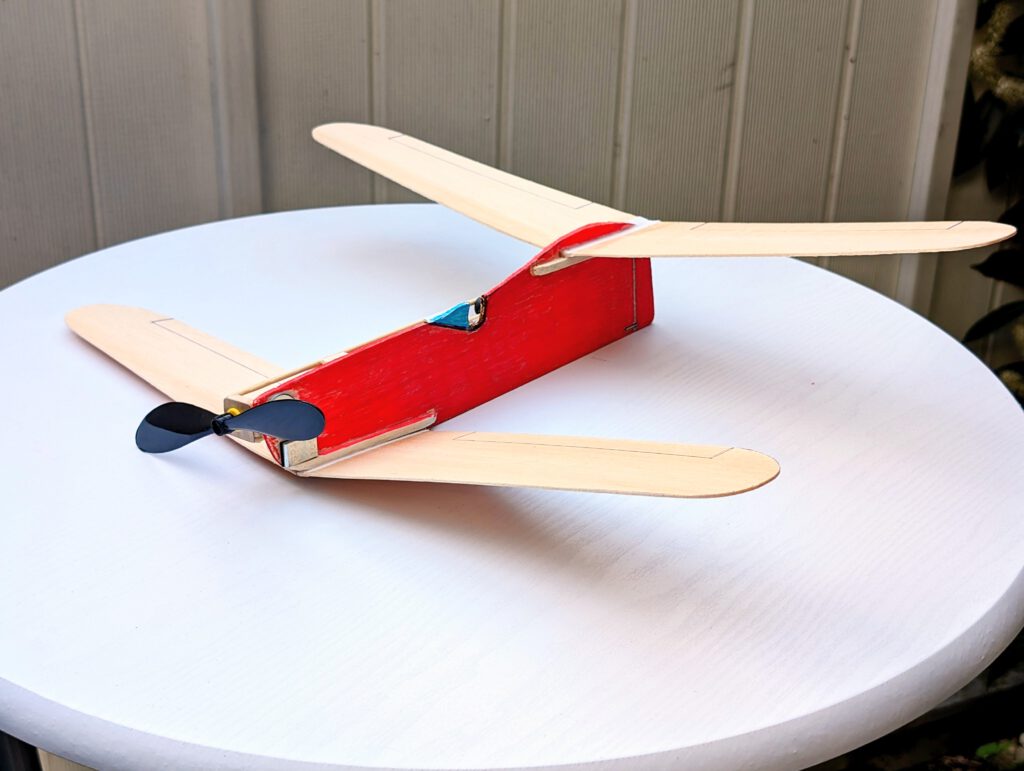
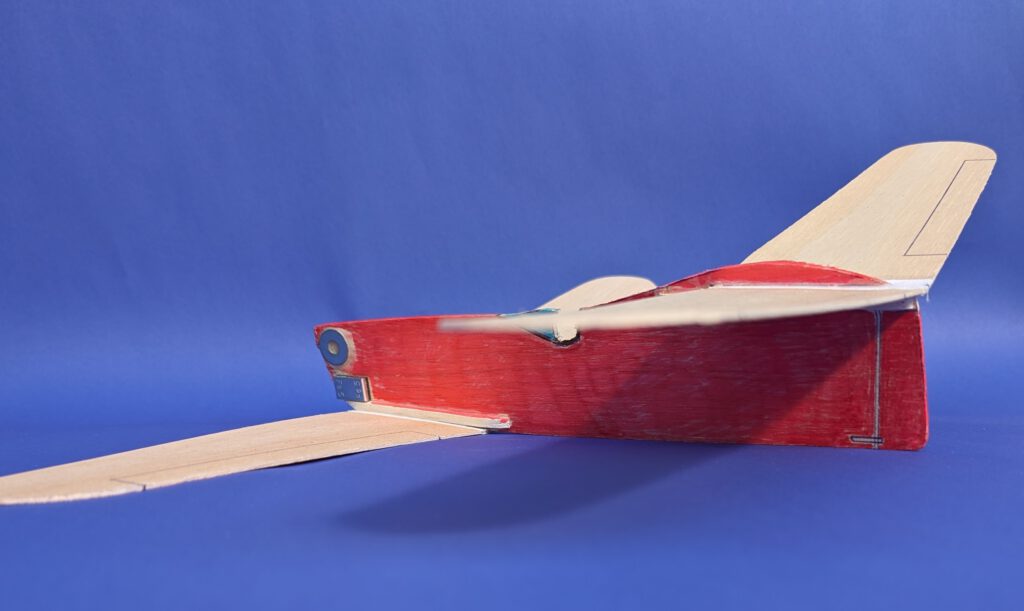
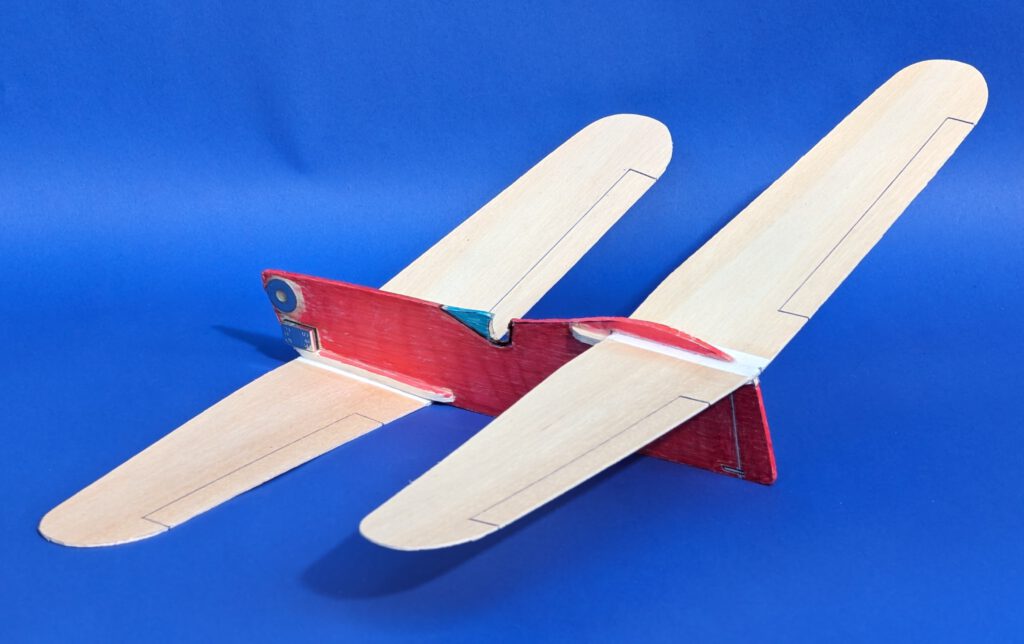
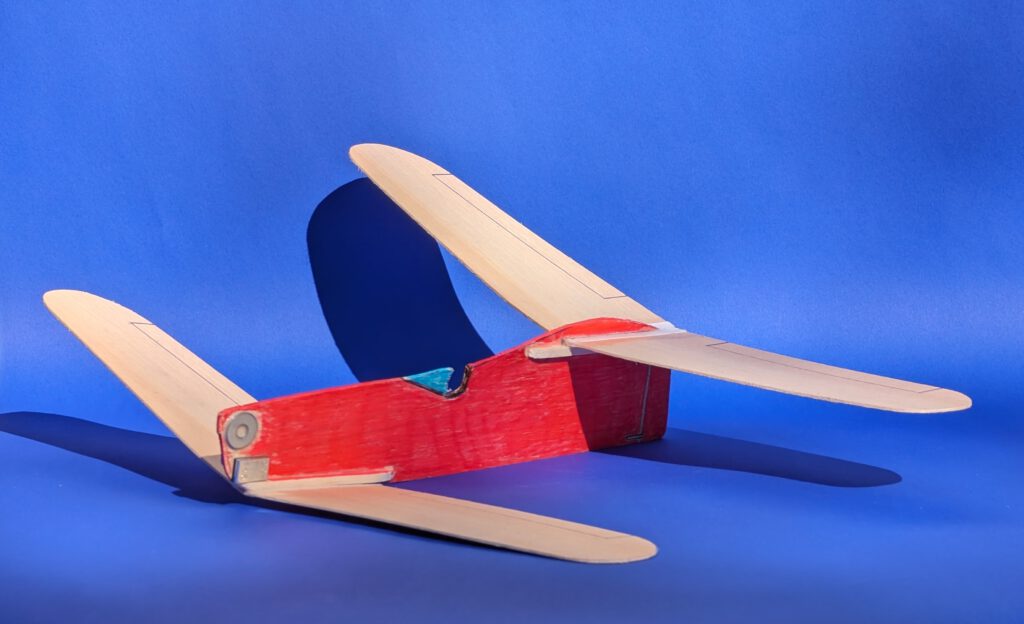


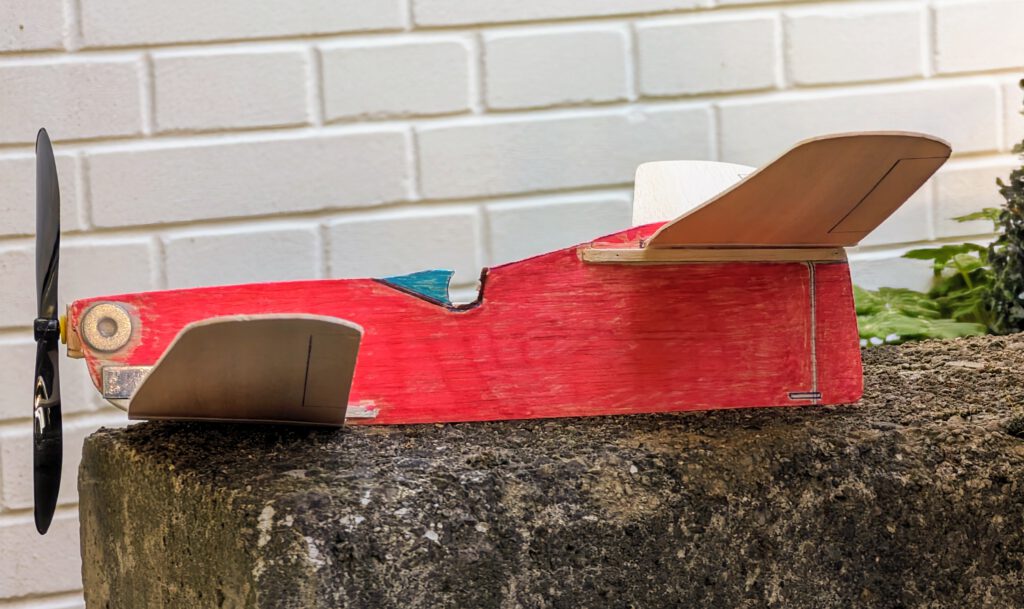
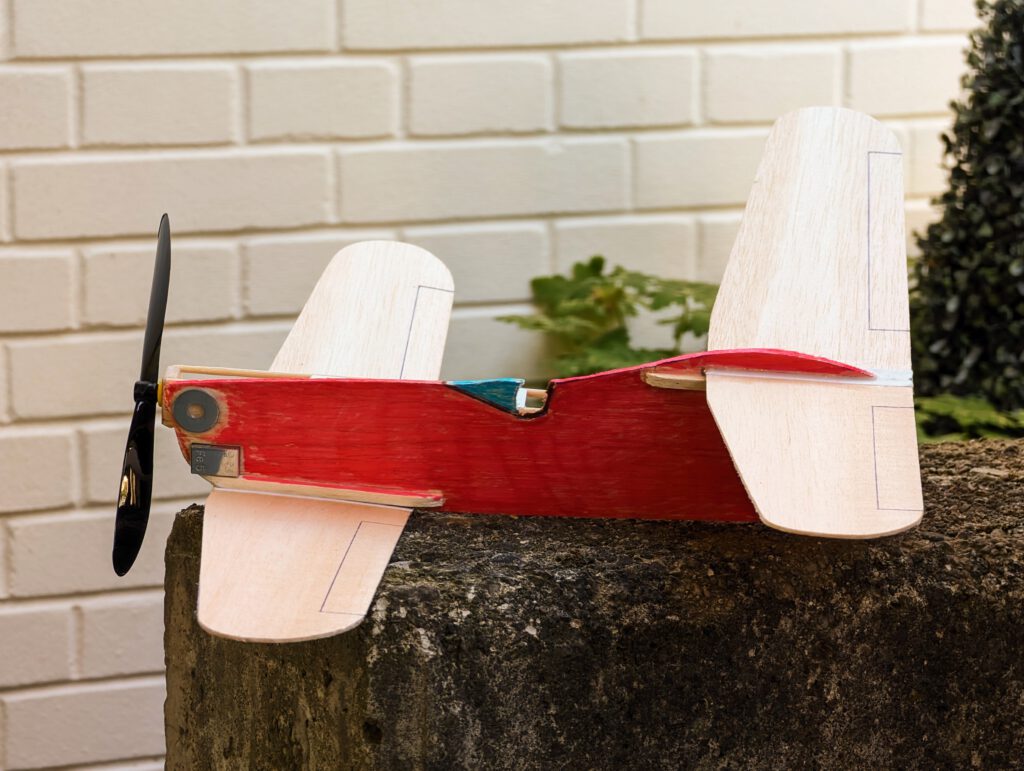
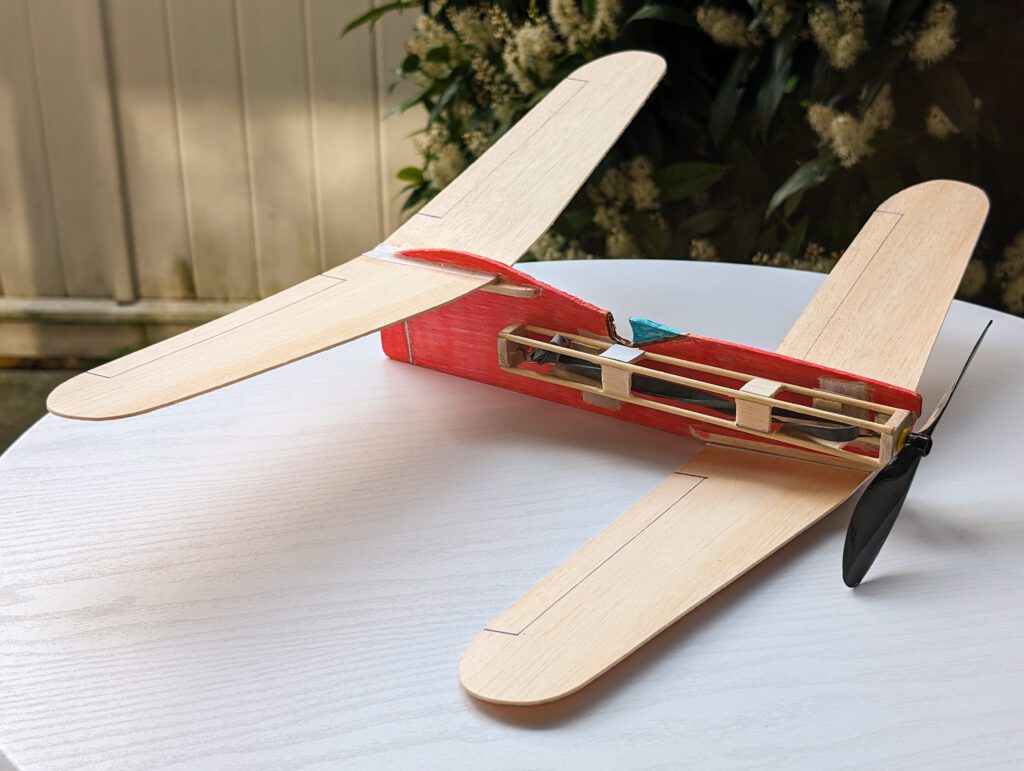
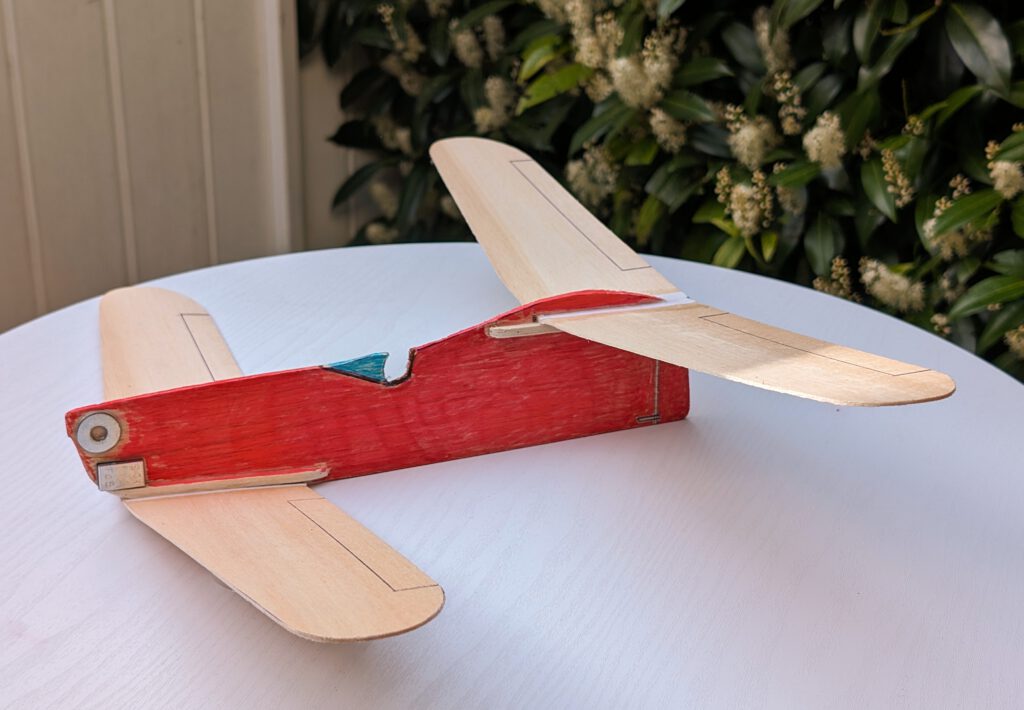
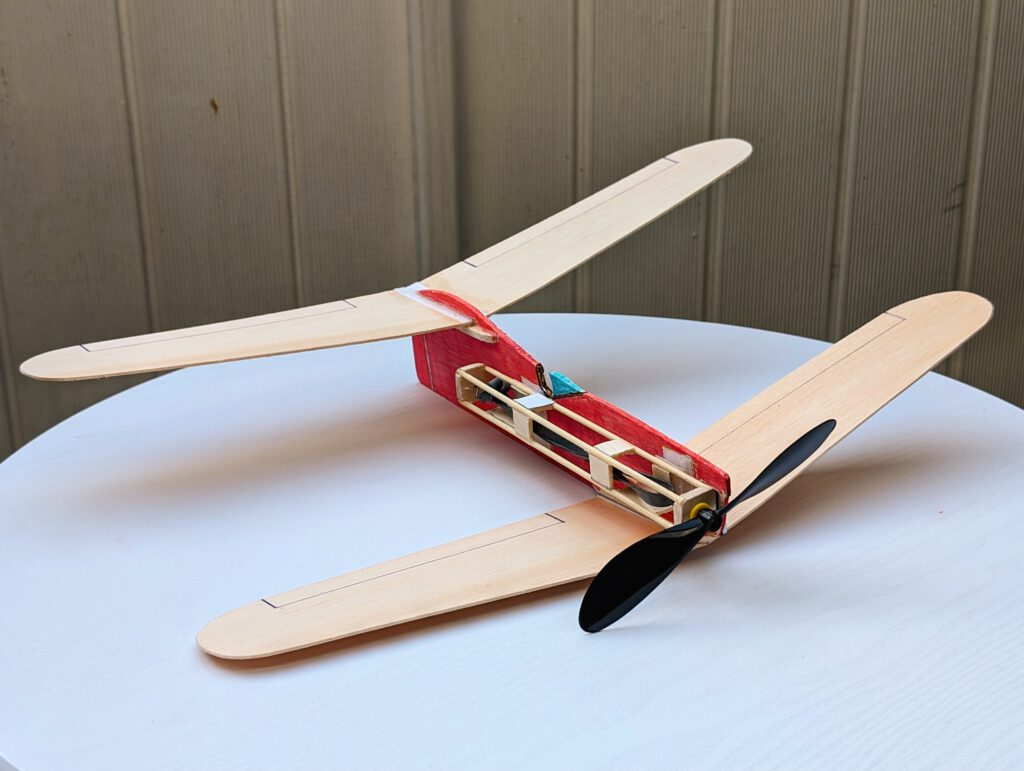
What is RPU?
RPU stands for rubber power unit.
This is a device designed for the modelbuilder who likes to fly many models with one only powerunit. Main material of the RPU comes from the grocery store around the corner: four barbecue skewer chopsticks. Add to them scratch balsa, a hook made from piano wire, some black rubber and a commercial plastic airscrew. That’s all.
The unit is attachable through two pieces of Velcro tape and can thus be used for example first on a little Spitfire five minutes later on a Mitsubishi Zero and ten minutes later on a Macchi Folgore of the same configuration. You build only one RPU and use it on as many modelplanes as you wish.
Models with RPU use the same asymmetrical principle as is known from No-cal models. From the one side they look handsome as from the other the power unit disturbs the harmonic view considerably.
Generally there is no great difference between the flight performances of a balsa sheet profile model with built-in rubber motor and a model flying on a RPU.
Why not try both principles? Among the plans range of beginner.zone you will find models of both categories. Sit down, build, fly, compare!
I developed and tested three different types of RPUs.
- The one for small models of 30 cm / 11.8 in to 40 cm / 15.75 in wingspan is the RPU 20 (lenghth 20 cm / 7.9 in).
- The one for medium sized models with a span of 40 cm / 15.75 in to 60 cm / 23.6 in is the RPU 30 (length 30 cm / 11.8 in).
- The one for larger models of up to 80 cm / 31.5 in wingspan is the RPU 40 (length 40 cm / 15.75 in).
- The RPU 40 is made from slightly different material. Instead of the skewer chopsticks it uses two strips of bamboo wooden sticks (400 x 9 x 3 mm). The rest is identical.
Building the balsa sheet model Schehak RPU.
Materials:
Fuselage: B 3; wings: B 1.5; wing supports: B strips 5 x 5; linen band width 10 mm / ½ in; ballast: 12.5 g / 0.44 oz scrap metal or lead.
Assembly:
Cut out balsa parts in accordance to plan. Make slot for rear wing and cutout for frontal wing on fuselage. Open cockpit cutout may follow. Sand well. Transfer outlines of cabin, rudders etc. from paper to wood with pen.
Wings:
Wings consists of a right and a left wing half each. Fix one wing half on building board with needles. Underlay the corresponding wing half’s tip in accordance to required dihedral. Join halves and cover wing center areas with linen band (photo). Let dry. If a wing has the tendency to rest only on one side it is too heavy on this side. To compensate imbalance disperse an amount of white wood glue on the opposite wing tip area. Do it if necessary twice until balance is obtained.
Fuselage:
Cement wing support strips as shown in plan on left and right sides. Hold with needles or clamps in place until dry.
Final Assembly:
Put fuselage on a so called “third hand”. Cement rear wing in slot and on fuselage supports using needles to hold in place. Doublecheck visually symmetry. Let dry. Now attach your model upside down on “third hand” and repeat procedure with frontal wing. Symmetry!
Let dry.
Install RPU and start test glides over tall grass. Use a piece of lead or scrap metal to balance model at given position.
Remember correct center of gravity (CG) is essential for successful flights.
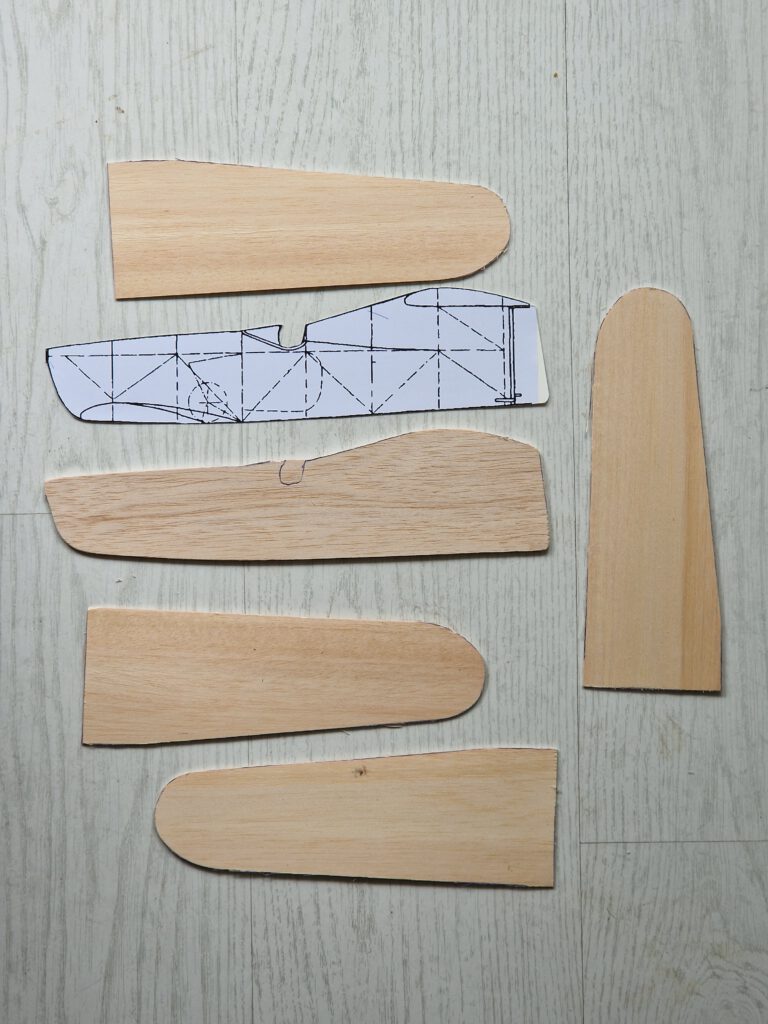
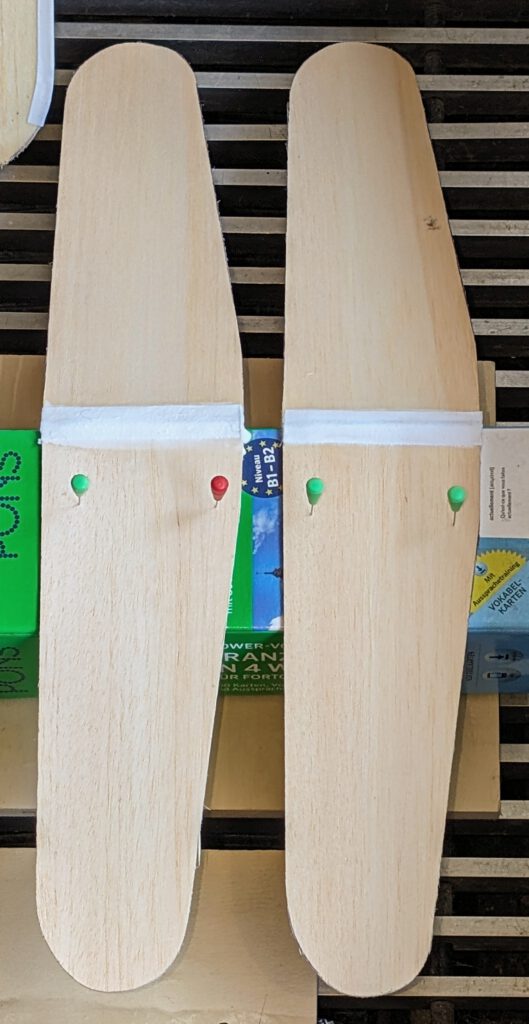
Size bol başarılı uçuşlar diliyorum! (Има много пријатних летова!)

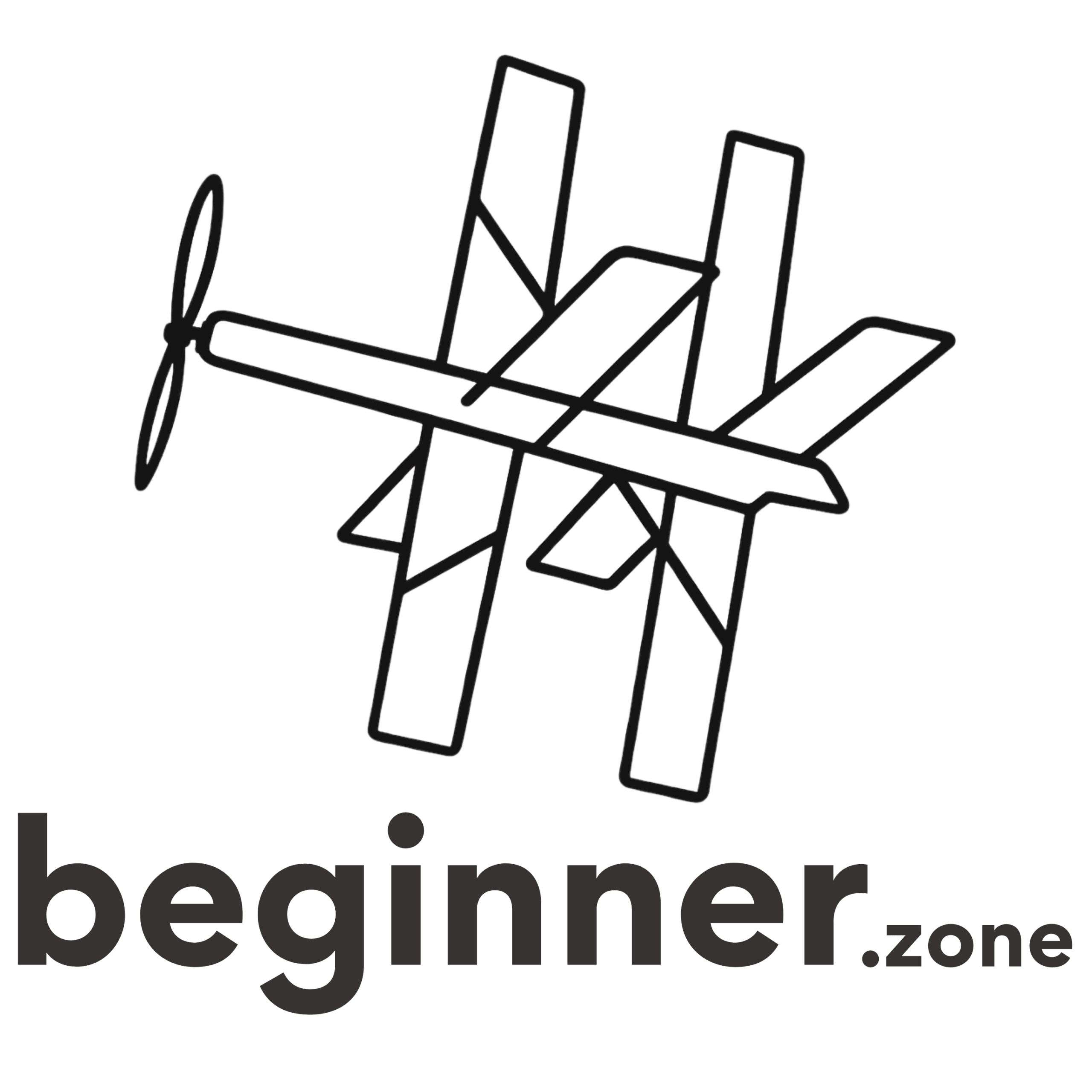
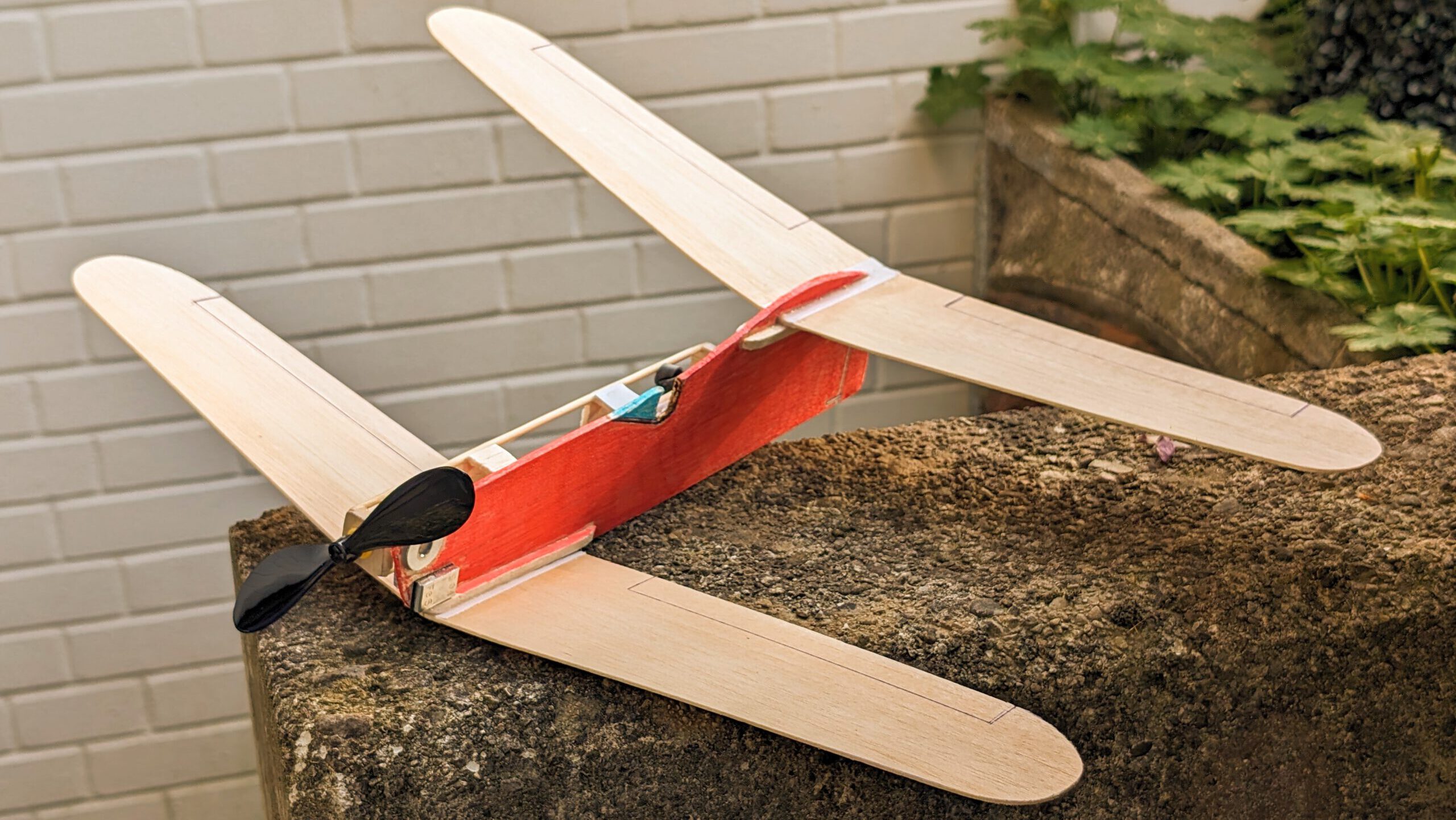
Leave a Reply